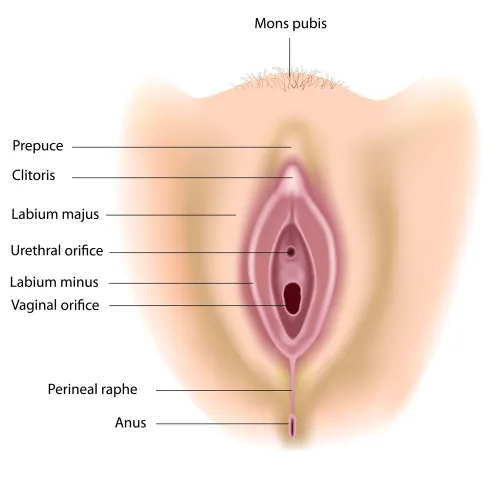ICD 10 Coding Alert
Delve Into These New ICD-10-CM Substance Abuse Dx Definitions, Descriptors

New remission status codes will now add specificity to your reporting.
Next year's ICD-10-CM contains a number of changes to the substance abuse codes that coding expert Jan Blanchard, CPC, CPMA, consultant at Vermont-based PCC, claims will provide "clarity in guidance for using existing codes." Specifically, some new codes and changed descriptors will enable you to add "in remission" status to alcohol, opioid, cannabis, and sedative abuse.
Will they affect claims generated by your ED? Read on to see how these revisions will impact your documentation.
ICD-10 Substance Use Dx Adds Detail
The new ICD-10 edition puts a lot more detail into the code set F10-F19 (Mental and behavioral disorders due to psychoactive substance use) - both in the form of expanded descriptors and new codes.
"The addition of the new ICD-10 codes within Chapter 5 [F10-F19] will allow coders to choose more specific alcohol, drug, and tobacco abuse codes pertaining to state of remission," reports Yvonne Dillon, CPC, CEDC, director of emergency department services at Bill Dunbar and Associates, LLC in Indianapolis, Indiana.
Cynthia A. Swanson, RN, CPC, CEMC, CHC, CPMA, senior manager of healthcare consulting for Seim Johnson in Omaha, Nebraska, agrees, further explains that "the addition of the 2018 ICD-10-CM code revisions continue to enhance proper diagnosis coding by incorporating greater clinical details and specificity. Terminology and disease classification updates are more consistent with current clinical practice," she says.
"Additionally, the updates allow for better data collection and accuracy of patient information," relays Swanson.
New codes: In 2018, the new codes you'll want to note will include the following:
- F10.11 - Alcohol abuse, in remission
- F11.11 - Opioid abuse, in remission
- F12.11 - Cannabis abuse, in remission
- F13.11 - Sedative, hypnotic or anxiolytic abuse, in remission
- F14.11 - Cocaine abuse, in remission
- F15.11 - Other stimulant abuse, in remission
- F16.11 - Hallucinogen abuse, in remission
- F18.11 - Inhalant abuse, in remission
- F19.11 - Other psychoactive substance abuse, in remission
Impact: You'll now be able to more accurately pinpoint the stage of the patient's substance abuse and recovery. This will give coders yet another tool in the fight to keep their patients' progress toward recovery on track, says Swanson.
"The new codes will provide greater specificity and clinical accuracy of the patient's diagnosis," she says.
Example: A patient presents to your ED complaining of swelling in her legs, nausea, a decreased appetite, and dizziness. The patient reports that she previously drank eight beers per night but stopped drinking "a while ago" and has felt great ever since she went to rehab. The physician runs tests and determines that the patient is suffering from a marked decrease in liver function. The patient is admitted to the hospital's hepatology unit. The ED physician reports the ICD-10 code for the abnormal liver function and can also choose to report a code such as F10.11 to demonstrate that the patient is in remission from alcohol abuse. This shows the potential cause of the decreased liver function.
Enhanced Descriptors Grace Several Existing Codes
Again, in the F10-F19 section of ICD-10 2018, you'll find expanded descriptors for many codes. As is the case with new codes, these descriptors will help you pinpoint the location of your patients' abuse issues.
Example: While the F13.21 (Sedative, hypnotic or anxiolytic dependence, in remission) code has not changed on the surface, notes below it will read thusly in 2018:
- Sedative, hypnotic or anxiolytic use disorder, moderate, in early remission
- Sedative, hypnotic or anxiolytic use disorder, moderate, in sustained remission
- Sedative, hypnotic or anxiolytic use disorder, severe, in early remission
- Sedative, hypnotic or anxiolytic use disorder, severe, in sustained remission
In 2017, there were no notes below F13.21, leaving coders at a loss to explain:
- The severity of the patient's disorder and
- The patient's remission status.
There will also be similarly expanded code descriptors for many codes in the F10-F19 set, allowing you to paint a better picture of your patients struggling with substance abuse.
Resource: For an in-depth look at the new ICD-10 codes that impact emergency departments, read our overview in Vol. 20, No. 8 of Emergency Department Coding and Reimbursement Alert. To review the government's complete listing of new, revised, and deleted ICD-10 codes, visit https://www.cms.gov/Medicare/Coding/ICD10/2018-ICD-10-CM-and-GEMs.html.
Related Articles
ICD 10 Coding Alert
- ED ICD-10 2018 Update:
Delve Into These New ICD-10-CM Substance Abuse Dx Definitions, Descriptors
New remission status codes will now add specificity to your reporting. Next year's ICD-10-CM contains [...] - Podiatry ICD-10 2018 Update:
Choose From 45 New Non-Pressure Chronic Ulcer Codes for Precision Podiatry Reporting
New "without necrosis" codes join new toe fracture codes for improved documentation. As of Oct. [...] - Cardiology ICD-10 2018 Update:
Coding Quiz: Don't Lose Heart. Take This Quiz to Prepare for the New ICD-10-CM Cardiology Codes
Hypertension, MI codes, guidelines got a makeover on Oct. 1. Ready or not, the 2018 [...] - Training:
Follow This Step-by-Step Guide When a Definitive Abdominal Pain Dx is Absent
Look to R10 codes when no classification is provided. Sometimes it just isn't possible for [...] - You Be the Coder:
Ask Mild or Persistent for Accurate Anxiety Depression Dx
Question: Our provider just performed a level three new patient evaluation and management (E/M) service for [...] - Coding Quiz:
Answers
Once you've answered the quiz questions on page 75, compare your answers with the ones [...] - Reader Question:
Pinpoint Location, Code This Newborn Discharge Correctly
Question: Our provider performed a final hospital discharge for a newborn baby that lasted over 30 [...] - Reader Question:
Use These Counseling, Chemo Codes for this Post-Op Cancer Encounter
Question: When can we bill a visit after a surgery for cancer? Our understanding is that [...]




